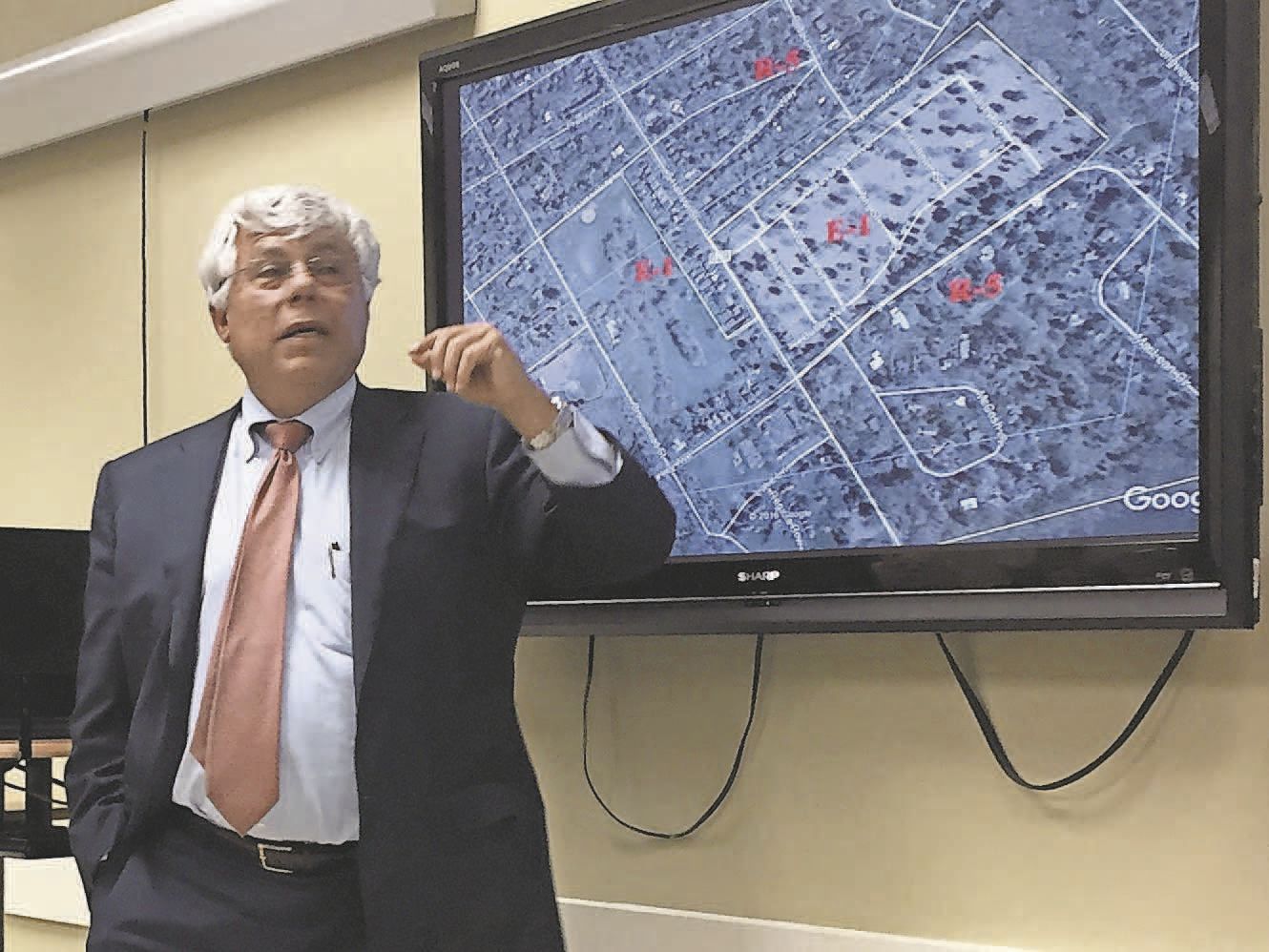By Philip Sean Curran, Staff Writer
Princeton University is looking to turn the former Butler tract on the eastern edge of town into a residential development, a top Nassau Hall official said Wednesday.
The comments of vice president and secretary Robert K. Durkee came at a neighborhood meeting that he, other university and town officials had with residents to discuss the future of the approximately 36-acre site. Once home to barracks style housing, the land has been cleared of the houses, but the vacant property is seen as critical to university expansion plans.
At this stage, the school said it expects that any development would contain about the same number of units that Butler used to have, roughly 300, plus whatever request the town makes for onsite affordable housing.
University officials are in the midst of planning the growth of a school intent on adding more graduate and undergraduate students, through a phased-in process. Princeton had, in the past academic year, a little more than 8,000 students overall.
At Wednesday’s meeting, university officials emphasized they have no “immediate plans” to redevelop a property that they and municipal officials agree needs to be rezoned. The property is surrounded by private homes on all four sides, with neighbors interested in the university’s plans for a site located in the area of Harrison Street, Hartley Avenue and Sycamore Road.
“As we’ve thought about this property, we think about it as a residential property,” Mr. Durkee said. “There’s no expectation that we will do anything in the short term. But in the long term, this is an important residential property for us.”
University architect Ron McCoy, who talked after Mr. Durkee, said Princeton is “committed” to using the property for residences, in a “compact, small, low scale development” for faculty, staff, graduate students and post docs. But at this stage, there are some unknowns.
“What we don’t know is timing. And we don’t have a design,” Mr. McCoy said. “It would not be large, single-family homes with big yards and things like that. It would be more compact, smaller scale units.”
In addition, the school would look to have as few cars on the future development as possible to minimize traffic, he said. The property is along the university shuttle route to get people in and out without using a personal automobile.
Princeton is poised to add more people, including students and faculty. For its future housing in the coming decades, the university is thinking about who it will need to house and what kind of housing they will want, Mr. Durkee said.
“And everything we read says that this generation is looking for smaller homes, less maintenance to worry about,” Mr. Durkee said.
At the moment, the Butler tract is zoned to allow dorms, single-and multi-family dwellings or apartments and educational uses, like classrooms, said town planner Lee O. Solow. He said the zoning needed to be updated, a sentiment that Nassau Hall shares.
“The zoning’s going to change. It’s going to become a residential zone,” Mr. Durkee said. “But we want to come out in a place that allows us to develop the kind of housing that we like to develop but that also works for the folks who live in the rest of that neighborhood.”
The meeting drew the likes of Mr. Durkee, the right-hand man to university president Christopher L. Eisgruber, and four of the six Princeton Council members, including acting Mayor Lance Liverman. The council would have to approve changing the zoning, something the town indicated that it would consider next year.
But there were no representatives of the school district in attendance, at a time when the district is grappling with how to handle enrollment growth from large residential developments in town, including the university’s Merwick Stanworth project on Route 206.
For his part, Mr. Liverman said after the meeting that he would not expect any impact on the school system from a future development of the Butler tract.

